All that lies behind our thoughts ends up ruling our existence as silent forces. Those deepest, darkest places are not easy to penetrate, but if we are attentive to the signs we produce, we can decipher and understand a bit better what we are made of. The dreamlike imagery in the works of Neo Rauch (Leipzig, Germany, 1960) is laden with symbolism: the overlapping of apparently unconnected scenes, abrupt perspectives, a variety of subjects and pictorial techniques… Neo Rauch was born barely a year before the raising of the Berlin Wall split his country in two and confined him to East Germany, circumstances that shaped his early years leading up to Reunification in 1989. As an artist, his education was rooted in modern German painting, in the tradition of the Leipzig School led by Arno Rink and Bernhard Heisig.
Author: Elena Cué
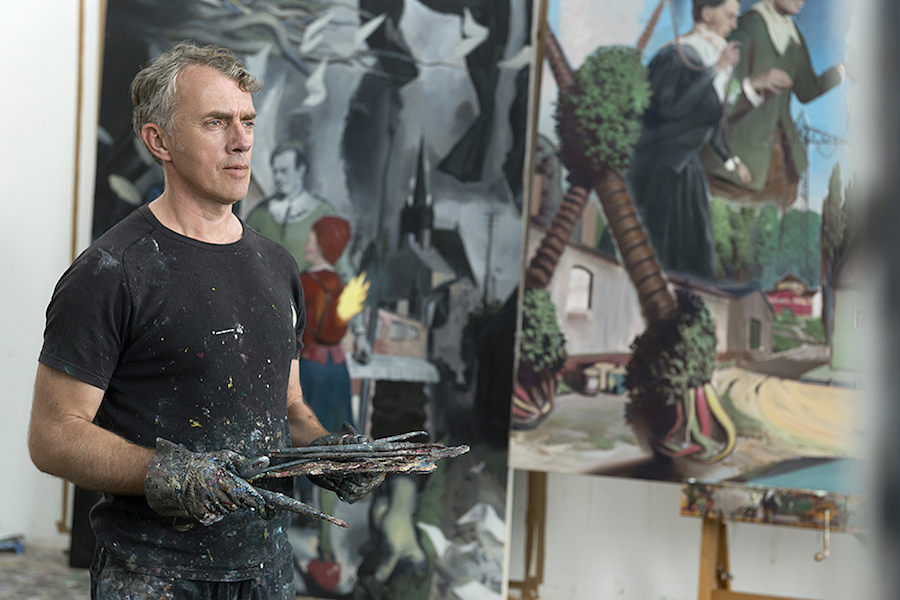
Neo Rauch - Courtesy David Zwirner, New York/London. Photo: Uwe Walter.
All that lies behind our thoughts ends up ruling our existence as silent forces. Those deepest, darkest places are not easy to penetrate, but if we are attentive to the signs we produce, we can decipher and understand a bit better what we are made of. The dreamlike imagery in the works of Neo Rauch (Leipzig, Germany, 1960) is laden with symbolism: the overlapping of apparently unconnected scenes, abrupt perspectives, a variety of subjects and pictorial techniques…
Neo Rauch was born barely a year before the raising of the Berlin Wall split his country in two and confined him to East Germany, circumstances that shaped his early years leading up to Reunification in 1989. As an artist, his education was rooted in modern German painting, in the tradition of the Leipzig School led by Arno Rink and Bernhard Heisig. Rausch creates his figurative works from a blend of influences and in an abstract-surrealist vein with traces of Socialist Realism. His works are in some of the most important museums around the world.
As I was admiring his recent works on a visit to the David Zwirner gallery in London, I noticed that the painter was present and resolved to ask him for an interview, which he accepted with a penetrating glance and few words.
Which artists from the Leipzig School were your models, and how did Socialist Realism influence your painting?
When I finished my studies, the idols of the Leipzig Academy were Max Beckmann, Lovis Corinth, Karl Hofer, Salvador Dalí and Otto Dix. This means that, as far as the parameters of figurative painting were concerned, the training we received was distanced from ideological precepts. In other words, in the 1980s, Socialist Realism had long stopped being a unifying concept. The generation of our professors had already succeeded in shedding that paradigm. Strong individualism took its place, whereas a critique of the social circumstances of the time was more or less veiled.
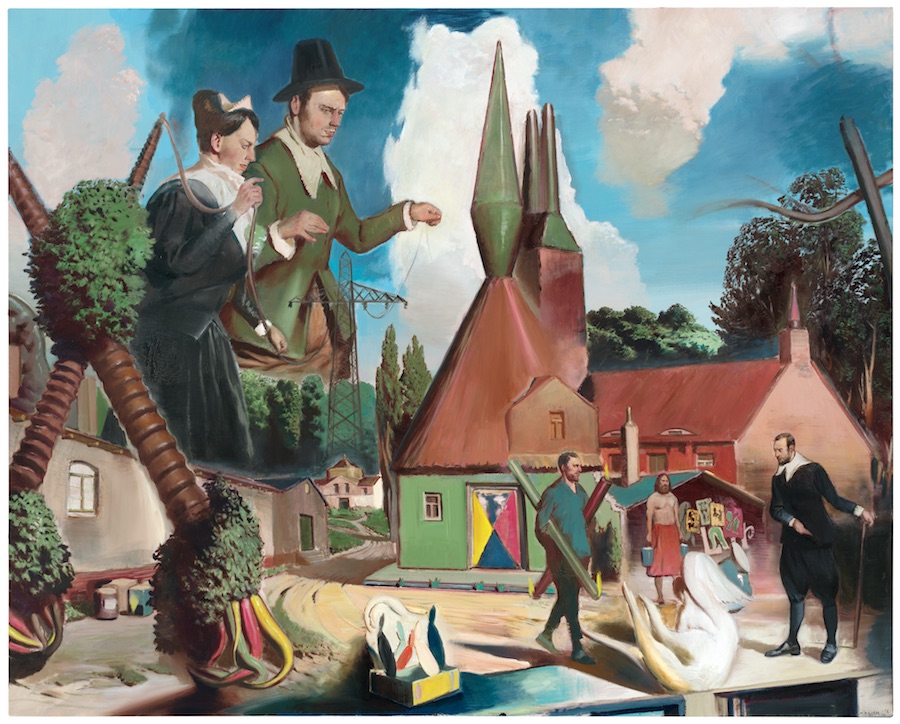
ZUSTROM. Gallery Eigen+Art, Berlin/Leipzig and David Zwirner Gallery, New York/London. Photo: Uwe Walter, Berlin. VG Bildkunst
How was your work affected by the socio-political events that followed the fall of the Berlin Wall in 1989 and the opening to the capitalist world? What were the most important changes in your life?
By that time, I had been able to seal off my artistic production from current political events, which could only filter in to my works –if at all– in homeopathic doses. When Werner Tübke was asked how he had experienced the arrival of the Red Army in 1945, he answered: “I was sitting in my garden painting wallflowers.” I was so busy at that time finding myself in my work that the major upheaval caused by political and social situation could only have been processed in my work as a very mild aftershock. The greatest change in my life came with the birth of my son in 1990. That’s when I crossed over into greater responsibility, but at the same time it offered me the chance to embrace child-play once again.
And all children dream of comics. One of the more disconcerting elements, as such, in the mixture of styles in your work is its references to comics. Why do you introduce these Pop symbols?
Comics provide figurative painters with a reservoir of raw materials of a very special kind. These reserved materials can be integrated as vivifying elements in the various successions of the “evolution of the classical image”. It is material that has not been worn out, that is innocent and above all that speaks to the child inside the painter, and keeps that child alive.
And the unconscious is another endless stream of raw material that has a strong presence in your compositions. Space and time lose their properties, making way for a dreamlike, otherworldly perception...
The unconscious is a never-ending source of imageries that seem to just be waiting to reveal themselves in my paintings. It’s an area where things are still all jumbled together and don´t have specific intentions, material that the painter is allowed to configure at will.
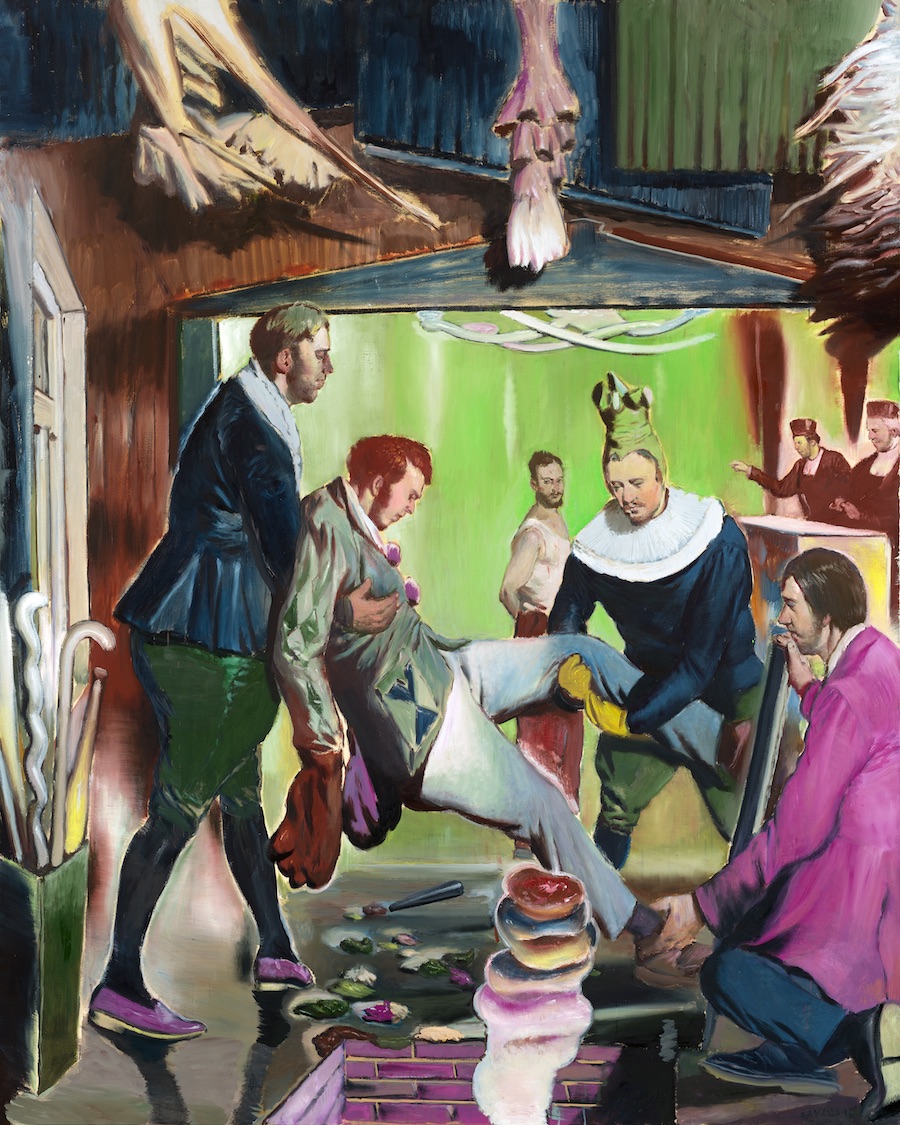
VERSENKUNG. Gallery Eigen+Art, Berlin/Leipzig and David Zwirner Gallery, New York/London. Photo: Uwe Walter, Berlin
Is painting then a way to bring order to your thinking? Do you feel a strong need to communicate?
When I paint, I don´t think, and instead I surrender myself completely to my feelings and to what the canvas demands of me. To me, this means bringing order, not to a mental space, but to the space of the unconscious. As a painter, I try to systematize the irrational, and to do that in painting after painting. This process is not easily reconciled with communication as it is most commonly understood.
And that leads to the disorder in your scenes and an obvious fondness for chaos. Do you understand the world you live in?
In my darkest moments, I feel like I might understand it. This means that its acting mechanisms come to light in an uncensored, open fashion. Thank God there are also moments of clarity, when lighter and apparently unrelated things swirl around me and awaken in me a fundamentally poetic spirit.
The absurd, the nonsensical, the mixture of sensations such as fear, the search for safety, melancholy, solitude... Like Calderon de la Barca said, “life is a dream, and dreams themselves are only dreams.”
I dream, therefore I am; or in the words of Hölderlin: “When we think we are beggars; when we dream, we are kings”.
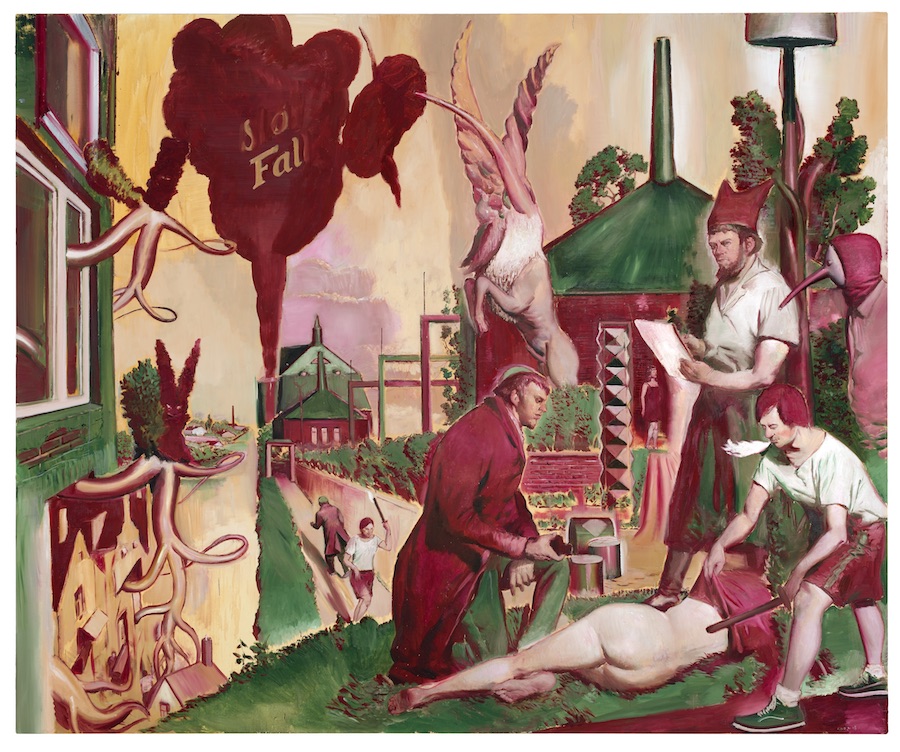
DER STÖRFALL. Gallery Eigen+Art, Berlin/Leipzig and David Zwirner Gallery, New York/London. Photo: Uwe Walter, Berlin
Some old masters are clearly present in your paintings. Can you tell me which ones have influenced you the most?
The most important influences are the ones I came into contact with after 1989, and on my first trips to Italy, where I experienced Giotto’s frescoes in Assisi as a kind of call to order, and Giotto seemed to guide me away from the confusion of semi-abstract doodles. Before him, there was Francis Bacon, an essential guide towards pictorial freedom and an enterprising spirit in terms of creativity beyond all academic restraint. Lastly, I should also mention Piero della Francesca, Tintoretto, Velazquez and Balthus.
I find many Old and New Testament symbolisms in your painting. How important is religion to you?
That is the main question. How do I see religion? Well, the symbols in my paintings are more likely extracted from the collective subconscious, or if you prefer, the Akasha –that ethereal undercurrent that links us all and carries everlasting images. Of course, both contain the pictorial materials of the sources you mentioned, even though I may not address them in a conscious manner. I would define myself as an atheist with occasional bursts of pantheism. As a painter, what matters to me is irrationality as a reservoir of inspiration. As someone living in the present times, however, and as a witness to the irrational events of religious origins that have taken place, I am determined to seek out my salvation in the ideals of the Enlightenment.
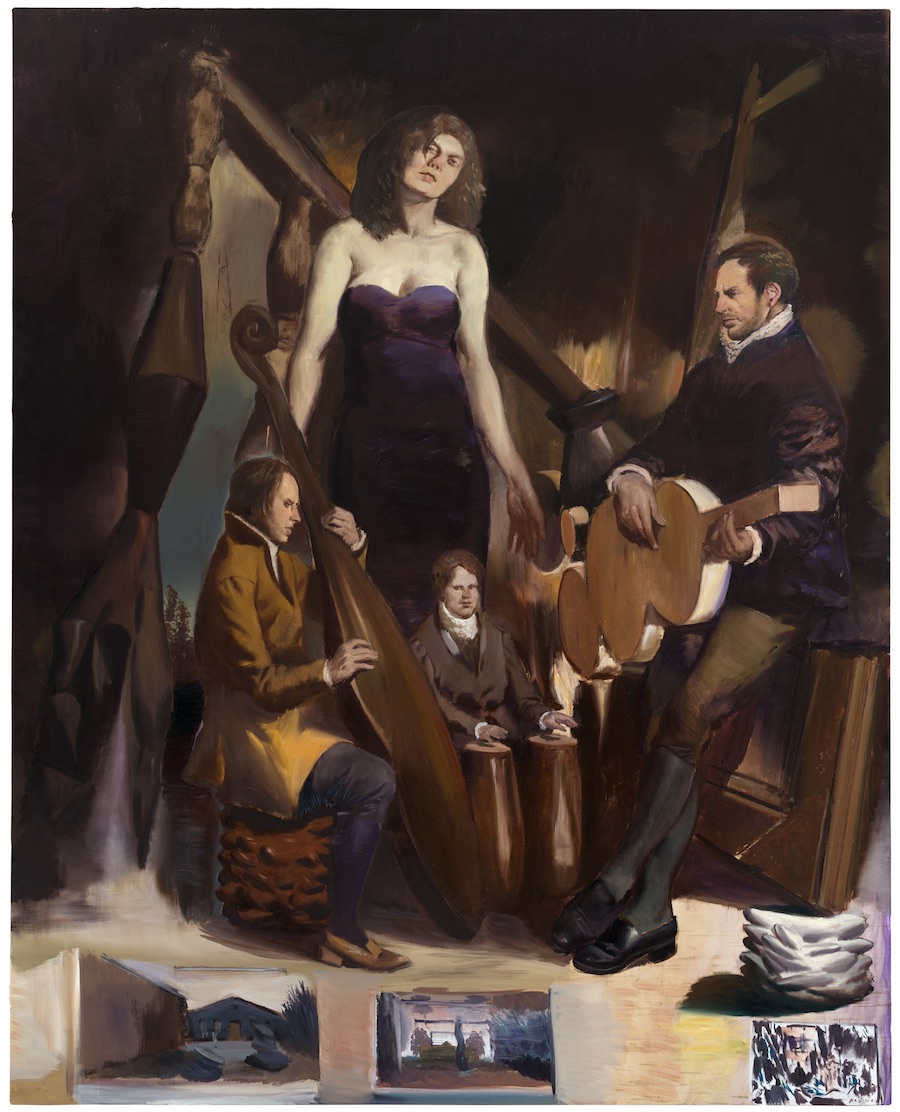
TIEF IM HOLZ.Gallery Eigen+Art, Berlin/Leipzig and David Zwirner Gallery, New York/London. Photo: Uwe Walter, Berlin
- Interview with Neo Rauch - - Alejandra de Argos -

